Welcome to our free classical music site

Do you write about classical music? Are you a blogger? Want to team up with Classical Connect? Send us a message, let's talk!

Do you write about classical music? Are you a blogger? Want to team up with Classical Connect? Send us a message, let's talk!
This Week in Classical Music: December 16, 2019. Beethoven plus Uchida, Huberman, and Reiner. Next year we’ll be celebrating Beethoven’s 250th anniversary – he was born in Bonn on this day in 1770. We’ll have many occasions to celebrate this event in 2020, but right now we’ll focus on three interpretations of Beethoven’s work, by a pianist, a violinist, and by a conductor, all three of whom were born this week.
three of whom were born this week.
The marvelous Japanese pianist living in Britain, Mitzuko Uchida is known as a superb Mozartean, but she’s equally good in Beethoven. Dame Uchida, a citizen of the UK, was born near Tokyo on December 20th of 1948. Her father was a diplomat, and the family moved to Austria when Mitzuko was 12. She studied at the Vienna Academy of Music; among her teachers were Wilhelm Kempff and Maria Curcio. In 1982 she played all of the Mozart sonatas in London and Tokyo (later she repeated the program in New York). Mitzuko Uchida is also an acclaimed interpreter of Schubert, Chopin, Debussy and Schoenberg, especially his Piano Concerto. We’ll hear how Mitzuko Uchida plays Beethoven’s Sonata no. 28, Op. 101. The sonata was written in 1816; it’s the first of Beethoven’s five late sonatas, and while not as famous as the following ones, from Hammerklavier no. 29, to the three sequential opuses, 109, 110, and 111 (sonatas no. 30, 31 and 32), we think it’s very much on the same breathtaking level. Mitzuko Uchida recorded all five late sonatas; this particular recording was made in 2007.
Bronisław Huberman was a Polish-Jewish violinist, one of the most renowned musicians in the inter-war period. Huberman was born in Częstochowa, Poland, on December 19th of 1882. He studied in Berlin and Paris and became famous by the age of 12 after touring the major capitals of Europe. Huberman and Arthur Rubinstein were best friends since they were boys, when Huberman was ten and Rubinstein was six. When the Nazis came to power, Huberman helped the prosecuted Jewish musicians move to Palestine and create what was then called the Palestine Symphony Orchestra, now the Israel Philharmonic (Huberman, who lived mostly in Vienna, moved to Switzerland after the Anschluss). Huberman made numerous recordings at the "Berliner Rundfunk" but those were destroyed during WWII. Fortunately, he also recorded in London and the US. Here’s Beethoven’s Violin Sonata No. 9, “Kreutzer.” The sonata, op. 47, was written in 1803. Huberman is accompanied by the pianist Ignaz Freidman, another famous Polish-Jewish musician. The recording was made in London in 1930.
And finally, the conductor. Fritz Reiner, one of the most important conductors of the 20th century (and another famous Jewish musician from Eastern Europe), was born in Budapest on December 19th of 1888. In 1914 he was hired as one of two principal Kapellmeisters at the Hofoper in Dresden. He stayed there till 1921 and worked closely with Richard Strauss. Reiner moved to the US in 1922. He worked with the Cincinnati and Pittsburgh symphony orchestras, and then, from 1953 till his death in 1963, was the music director of the Chicago Symphony, making it, in the words of Igor Stravinsky, ”the most precise and flexible orchestra in the world.” While a consummate musician, Reiner often behaved as an ill-tempered disciplinarian. Here’s Reiner conducting the Chicago Symphony in Beethoven’s First Symphony, op. 21, written around 1795. The recording was made in 1961.Permalink
This Week in Classical Music: December 2, 2019. Three Francophones and more. As it often happens, the anniversaries of three French speaking (and mostly French) composers fall on the second week of December. They are César Franck’s, who was born on December 10th of 1822 in Liège, Belgium but spent much of his life in France, and two great Frenchmen: Olivier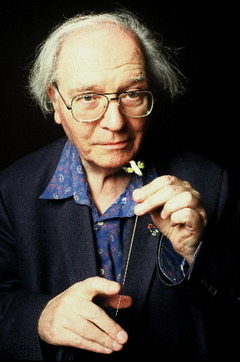 Messiaen and Hector Berlioz. Messiaen was born on December 10th of 1908 in Avignon, Berlioz – on December 11th of 1803 in La Côte-Saint-André, a small village not far from Grenoble. Messiaen was one of the greatest composers of the 20th century, while Berlioz occupies a similar place in the Pantheon of the 19th century composers, and we’ve written about both of them on many occasions (see, for example, here and here). Messiaen, as we know, was not only a composer, he was an amateur ornithologist; he also used real and imitated birdsongs in many of his compositions. In 1955 Pierre Boulez asked Messiaen to write a piece based on the songs of exotic birds, and that’s exactly what Messiaen came up with, Oiseaux exotiques, a composition for the piano and small orchestra. It was premiered in 1956 with Yvonne Loriod, Messiaen’s wife, at the piano. The birds Messiaen so exquisitely imitates include the cardinal, the Hindu mynah, the oriole and the mockingbird. Oiseaux exotiques is performed here by the pianist Jean-Yves Thibaudet with the Royal Concertgebouw Orchestra under the direction of Riccardo Chailly.
Messiaen and Hector Berlioz. Messiaen was born on December 10th of 1908 in Avignon, Berlioz – on December 11th of 1803 in La Côte-Saint-André, a small village not far from Grenoble. Messiaen was one of the greatest composers of the 20th century, while Berlioz occupies a similar place in the Pantheon of the 19th century composers, and we’ve written about both of them on many occasions (see, for example, here and here). Messiaen, as we know, was not only a composer, he was an amateur ornithologist; he also used real and imitated birdsongs in many of his compositions. In 1955 Pierre Boulez asked Messiaen to write a piece based on the songs of exotic birds, and that’s exactly what Messiaen came up with, Oiseaux exotiques, a composition for the piano and small orchestra. It was premiered in 1956 with Yvonne Loriod, Messiaen’s wife, at the piano. The birds Messiaen so exquisitely imitates include the cardinal, the Hindu mynah, the oriole and the mockingbird. Oiseaux exotiques is performed here by the pianist Jean-Yves Thibaudet with the Royal Concertgebouw Orchestra under the direction of Riccardo Chailly.
Elliott Carter was one of the most important American modernist composers. He was born on December 11th of 1908, one day after Messiaen, in Manhattan and lived a very long and productive life: Carter died on November 5th of 2012 at the age of 103 and wrote his last composition, Epigrams for piano trio, that very year. Much of Carter’s music is complex and not easy to approach. This piece, Variations for Orchestra, was written in 1955 (as was Messiaen’s Oiseaux exotiques which we referenced above) and is considered one of his more accessible pieces. Everything, of course, is relative. Variations is performed by the Cincinnati Symphony Orchestra under the direction of Michael Gielen.
One of the greatest German sopranos of the 20th century, Elisabeth Schwarzkopf was born on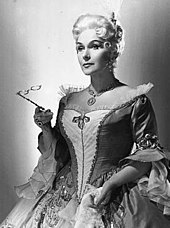 December 9th of 1915 in Jarotschin in the Prussian Province of Posen (this now-Polish city is called Jarocin). Schwarzkopf also lived a long life – not as long as Elliott Carter, but still a full 90 years. Some of these years were difficult and morally ambiguous if not repugnant (she was a member of the Nazi party – but so was Herbert von Karajan). What we remember her for, though, is the clarity and beauty of her voice, which is unsurpassed, and the intelligence of her singing. And of course, she was also a beautiful woman with a great stage presence. Here’s a recording from 1951: Schwarzkopf singing Robert Schumann’s Der Nussbaum (The Walnut Tree), from his collection of songs, op. 25, Myrthen. Gerald Moore is on the piano.Permalink
December 9th of 1915 in Jarotschin in the Prussian Province of Posen (this now-Polish city is called Jarocin). Schwarzkopf also lived a long life – not as long as Elliott Carter, but still a full 90 years. Some of these years were difficult and morally ambiguous if not repugnant (she was a member of the Nazi party – but so was Herbert von Karajan). What we remember her for, though, is the clarity and beauty of her voice, which is unsurpassed, and the intelligence of her singing. And of course, she was also a beautiful woman with a great stage presence. Here’s a recording from 1951: Schwarzkopf singing Robert Schumann’s Der Nussbaum (The Walnut Tree), from his collection of songs, op. 25, Myrthen. Gerald Moore is on the piano.Permalink
This Week in Classical Music: December 2, 2019. Mieczysław Weinberg and Polish music. December 8th marks the 100th anniversary of the birth of Mieczysław Weinberg, a Polish-Jewish-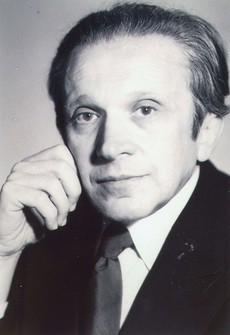 Soviet composer who barely survived first the Nazi invasion of Poland and then Stalin’s deadly persecution of the Jews. We wrote about Weinberglast year, so here is a piece of his music: the first movement of his last symphony, No. 21, “Kaddish,” written in 1991 as a memorial for Holocaust victims from the Warsaw Ghetto. The Lithuanian conductor Mirga Gražinytė-Tyla is leading the combined forces of the City of Birmingham Symphony Orchestra and Kramerata Baltica, with Gidon Kremer playing solo parts.
Soviet composer who barely survived first the Nazi invasion of Poland and then Stalin’s deadly persecution of the Jews. We wrote about Weinberglast year, so here is a piece of his music: the first movement of his last symphony, No. 21, “Kaddish,” written in 1991 as a memorial for Holocaust victims from the Warsaw Ghetto. The Lithuanian conductor Mirga Gražinytė-Tyla is leading the combined forces of the City of Birmingham Symphony Orchestra and Kramerata Baltica, with Gidon Kremer playing solo parts.
Even though Weinberg was born in Poland, he was a very Soviet composer, highly influenced by Shostakovich. But there was also a “purely” Polish composer who was born this week: Henryk Górecki. While Weinberg is half-forgotten, despite several very successful stagings of his magnum opus, the opera The Passenger, Henryk Górecki is one of the most commercially successful contemporary composers. Górecki was born on December 6th of 1933, in Czernica, a village in southern Poland. When he was four, he dislocated a hip, which, untreated, led to the development of bone tuberculosis; Górecki suffered from it for the rest of his life. He studied at a provincial music school in Rybnik, and later, at the Music Academy in Katowice (he would eventually become a professor there). Górecki’s early compositions coincided with Poland opening up to Western influences, and were strongly affected by modernist composers, from Webern to Boulez. His symphony no. 1, written in 1959, was a successful example of his early style. For about 10 years Górecki was known as one of the most important Polish avant-garde composers, but eventually he started moving away from dissonance and serialism, simplifying his musical idiom and making it more expressive. An interesting example of this transitional period is his 1965 orchestral piece Refrain, Op. 21. This transformation culminated in 1976 with the Symphony No. 3, “Symphony of Sorrowful Songs,” Op. 36, for soprano and orchestra. Probably Górecki’s most accessible work, it became popular around the world;recordings of it sold more than one million copies, an unheard-of number for a living classical composer. Following that success, he wrote several significant works, including another symphony and chamber pieces, some commissioned by the Kronos Quartet. Górecki died in Katowice on November 12th of 2010. Here’s the second movement of his 1986 Lerchenmusik, Op 53, subtitled Recitatives and Ariosos. It’s performed by the members of the London Sinfonietta.
And continuing with the Polish theme, Krystian Zimerman, a brilliant Polish pianist, was born on December 5th of 1956. Like Górecki, he was born in Silesia, in the city of Zabrze. In 1975, at the age of 18, Zimerman won the Warsaw International Chopin Piano Competition; that launched his international career. Known as a great interpreter of the music of Chopin, he promotes the music of Polish composers; Witold Lutosławski dedicated his piano concerto to Zimerman. For a world-renowned musician, Zimerman is very politically active. He doesn’t visit Russia because of its policies and the Katyn massacre; he stopped concertizing in the US over the Guantanamo detainees and the proposed missile shield in Poland, and he supports Palestinian causes.Permalink
This Week in Classical Music: November 25, 2019. Virgil Thomson. The American composer Virgil Thomson’sbiography may be more interesting than his music, and the same probably could be said about his work as a music critic, but there’s no questioning him as a cultural figure of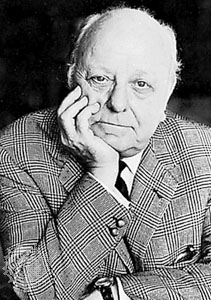 major influence. Thomson was born in Kansas City, Missouri, on this day in 1896. As a youngster he studied music with several teachers; in 1913 he enrolled in college and when the US entered the Great War, he enlisted. Thomson never saw action and was discharged as soon as the war ended. In 1919 Thomson went to Harvard, were he studied music and worked as an accompanist to the Harvard Glee Club, which by then was turning into a serious choral ensemble. Through a friend, the poet and musician Samuel Foster Damon, he was introduced to the music of Erik Satie and the poetry of Gertrude Stein. In 1921 he went with the Glee Club on tour in France and stayed in Paris the following year. While in Paris, he studied with Nadia Boulanger, met his idol Satie and the members of Les Six. Graduating from Harvard in 1923, he went to New York to study at the Juilliard, but two years later left New York for Paris. Thompson stayed there till 1940. In 1926 he wrote "Sonata da Chiesa," scores for an unusual combination of instruments: the viola, clarinet, trumpet, horn and trombone. It was borderline atonal (John Cage liked it) and the last one to be written in this style: after that all of Thompson’s work was tonal, straightforward but very original and whimsical. Here’s the first movement, Choral, from the Sonata. In January of 1926 Thomson’s friend composer George Antheil took him to the home of Gertrude Stein and Alice B. Toklas. Stein, a poet, a major art collector, hostess of a popular salon and overall an important cultural figure, was 20 year older than Thomson but she took to the young composer. Soon after, Thomson put to music Stein’s playful and abstract poem “Susie Asado” (here performed by the tenor Glenn Siebert with Phillip Bush on the piano); that marked the beginning of their long and fruitful collaboration. In 1927, on Thomson’s suggestion, Gertrude Stein wrote a piece she called “Four Saints in Three Acts”; Thomson used it to compose an opera. The main characters include Ignatius of Loyola and Saint Teresa of Ávila and a whole lot of other saints; the narrative is vague, the plot practically nonexistent: the text revolves around the sound of words. Nonetheless, Thomson loved it and set it to music, every word of it. Completed in 1928, it wasn’t staged till 1934. Maurice Grosser who produced it had to invent a story line. “Four Saints” premiered in Hartford, Connecticut – surprisingly, to great acclaim. Two week later it opened on Broadway and ran for six weeks. Difficult to imagine such a thing happening in the 21st century.
major influence. Thomson was born in Kansas City, Missouri, on this day in 1896. As a youngster he studied music with several teachers; in 1913 he enrolled in college and when the US entered the Great War, he enlisted. Thomson never saw action and was discharged as soon as the war ended. In 1919 Thomson went to Harvard, were he studied music and worked as an accompanist to the Harvard Glee Club, which by then was turning into a serious choral ensemble. Through a friend, the poet and musician Samuel Foster Damon, he was introduced to the music of Erik Satie and the poetry of Gertrude Stein. In 1921 he went with the Glee Club on tour in France and stayed in Paris the following year. While in Paris, he studied with Nadia Boulanger, met his idol Satie and the members of Les Six. Graduating from Harvard in 1923, he went to New York to study at the Juilliard, but two years later left New York for Paris. Thompson stayed there till 1940. In 1926 he wrote "Sonata da Chiesa," scores for an unusual combination of instruments: the viola, clarinet, trumpet, horn and trombone. It was borderline atonal (John Cage liked it) and the last one to be written in this style: after that all of Thompson’s work was tonal, straightforward but very original and whimsical. Here’s the first movement, Choral, from the Sonata. In January of 1926 Thomson’s friend composer George Antheil took him to the home of Gertrude Stein and Alice B. Toklas. Stein, a poet, a major art collector, hostess of a popular salon and overall an important cultural figure, was 20 year older than Thomson but she took to the young composer. Soon after, Thomson put to music Stein’s playful and abstract poem “Susie Asado” (here performed by the tenor Glenn Siebert with Phillip Bush on the piano); that marked the beginning of their long and fruitful collaboration. In 1927, on Thomson’s suggestion, Gertrude Stein wrote a piece she called “Four Saints in Three Acts”; Thomson used it to compose an opera. The main characters include Ignatius of Loyola and Saint Teresa of Ávila and a whole lot of other saints; the narrative is vague, the plot practically nonexistent: the text revolves around the sound of words. Nonetheless, Thomson loved it and set it to music, every word of it. Completed in 1928, it wasn’t staged till 1934. Maurice Grosser who produced it had to invent a story line. “Four Saints” premiered in Hartford, Connecticut – surprisingly, to great acclaim. Two week later it opened on Broadway and ran for six weeks. Difficult to imagine such a thing happening in the 21st century.
In 1940, with the war raging in Europe and the Germans occupying Paris, Thomson accepted an offer from the New York Herald Tribune, one of the best newspapers of the day, to become their chief music critic and moved to New York (Stein stayed behind in Vichy, France and unfortunately, became rather sympathetic to the Pétain regime). Thomson settled in the Chelsea Hotel, where he lived for the rest of his life: he died in his suite there in 1989 at the age of 92. He became the most influential critic in America, even though his reviews were often idiosyncratic and sometimes unfair. As Thomson put it, the reason his reviews were tolerated is that he wrote “musical descriptions more precise than those being used just then by other reviewers.” He continued composing and collaborating with Stein. Their final effort together was The Mother of Us All, based, rather vaguely, on the life of Susan B. Anthony, which Stein completed before her death in 1946. The opera premiered in May of 1947. Here’s the Overture, with Raymond Leppard conducting the Santa Fe orchestra.Permalink
This Week in Classical Music: November 18, 2019. Merula and Ormandy. Tarquinio Merula (not to be confused with Claudio Merulo), the Italian composer of the early Baroque, was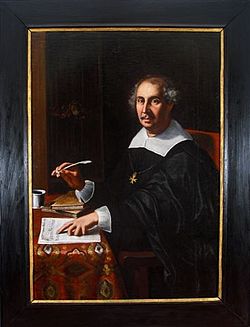 born on November 24th of 1595 in Brusseto, Emilia-Romagna. (Brusseto, a town of only 7,000, has a rich musical history: Giuseppe Verdi, who was born in the nearby village of Le Roncole, went to school in Busseto and further studied there with the composer Ferdinando Provesi; the famous tenor Carlo Bergonzi owned a hotel in Busseto, he called it I due Foscari, after an opera by Verdi in which he sung with great success. Bass-baritone Luca Pisaroni also grew up in Brusseto). Merula studied music in Cremona and worked as an organist there and in Lodi. In 1621 he traveled to Warsaw where he was offered a position of ‘organista di chiesa e di camera’ to Sigismund III, King of Poland. He stayed in Warsaw for five years, returning to Cremona in 1626. From that point on he lived and worked in two cities, Cremona and Bergamo, often moving not on his own volition. First, he served in the cathedral of Cremona, responsible for certain celebrations of the Madonna; in 1631 he went to Bergamo to assume the position of maestro di capella at the church of Santa Maria Maggiore. Just one year later he was dismissed for “indecency manifested towards several of his pupils” and returned to Cremona to assume his old position. There he had disagreements about his salary and in 1638 returned to Bergamo, this time serving at the Cathedral (the Cathedral and Santa Maria Maggiore are located next to each other in the historic center of the so-called Citta Alta, the oldest and the prettiest part of Bergamo). The two churches often used the same musicians but Merula often quarreled with his former employer. Still, he managed to stay in Bergamo till 1646, when he returned to Cremona, again to assume his old position; he lived in Cremona for the rest of his life and died there on December 10th of 1665.
born on November 24th of 1595 in Brusseto, Emilia-Romagna. (Brusseto, a town of only 7,000, has a rich musical history: Giuseppe Verdi, who was born in the nearby village of Le Roncole, went to school in Busseto and further studied there with the composer Ferdinando Provesi; the famous tenor Carlo Bergonzi owned a hotel in Busseto, he called it I due Foscari, after an opera by Verdi in which he sung with great success. Bass-baritone Luca Pisaroni also grew up in Brusseto). Merula studied music in Cremona and worked as an organist there and in Lodi. In 1621 he traveled to Warsaw where he was offered a position of ‘organista di chiesa e di camera’ to Sigismund III, King of Poland. He stayed in Warsaw for five years, returning to Cremona in 1626. From that point on he lived and worked in two cities, Cremona and Bergamo, often moving not on his own volition. First, he served in the cathedral of Cremona, responsible for certain celebrations of the Madonna; in 1631 he went to Bergamo to assume the position of maestro di capella at the church of Santa Maria Maggiore. Just one year later he was dismissed for “indecency manifested towards several of his pupils” and returned to Cremona to assume his old position. There he had disagreements about his salary and in 1638 returned to Bergamo, this time serving at the Cathedral (the Cathedral and Santa Maria Maggiore are located next to each other in the historic center of the so-called Citta Alta, the oldest and the prettiest part of Bergamo). The two churches often used the same musicians but Merula often quarreled with his former employer. Still, he managed to stay in Bergamo till 1646, when he returned to Cremona, again to assume his old position; he lived in Cremona for the rest of his life and died there on December 10th of 1665.
Merula’s music followed the Venetian tradition of Monteverdi and Giovanni Gabrieli. Here’s an example of his church music, a beautiful setting of Lauda Jerusalem from the 1640 collection of psalms and masses called Arpa Davidica. Giovanni Acciai leads the ensemble Nova Ars Cantandi. And here is a very different example, a secular piece called Aria sopra la ciaccona, from a collection published three years earlier, in 1637. It’s performed by the Australian Brandenburg Orchestra under the direction of Paul Dyer.
November 18th marks the 120th anniversary of the birth of Eugene Ormandy. He was born Jenő Blau in Budapest into a Jewish family in 1899. Blau changed his name to Eugene Ormandy when he moved to the US in 1921. A violinist whose American career wasn’t going well, he turned to conducting almost by chance. He slowly built up his career and was hired by the Philadelphia Orchestra in1936. He led the orchestra for the next 44 years, co-creating (with Leopold Stokowski) the famously lush “Philadelphia sound,” retiring as “conductor-laureate” in 1980. Some of Ormandy’s interpretations may seem a bit dated but nobody can deny the beauty of his orchestra’s sound.Permalink
This Week in Classical Music: November 11, 2019. The interpreters. Even though Alexander Borodin, Aaron Coplandand Paul Hindemith were born this week, we’ll dedicate this entry not to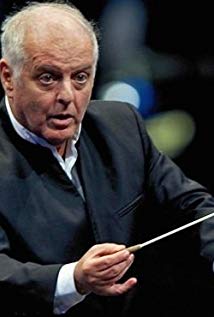 composers but to musicians who interpret their music. And this week was rich in this respect: several talented pianists, conductors, and string players have their birthdays or anniversaries this week. Daniel Barenboim who was born on November 15th of 1942 in Buenos Aires, Argentina, spans two categories, that of a pianist and a conductor. Barenboim started out as a piano wunderkind: the conductor Wilhelm Furtwängler and the pianist Edwin Fischer both hailed him as “phenomenon.” The Barenboim family moved from Argentina to Israel when Daniel was 10. He studied with Nadia Boulanger in Rome, played at the Mozarteum in Salzburg, met Zubin Mehta, Pinchas Zukerman, Itzhak Perlman and in 1967, in London, the young cellist Jacqueline Du Pré, whom he married later that year. The friendship between these five outstanding musicians was remarkable; they played together often – some of the best violin recordings were made by Perlman and Zukerman playing with Barenboim; there is even a recording of the five of them playing Schubert’s "Trout" Quintet. From the 1960s to 2000s Barenboim had one of the most successful piano careers, but he was also interested in conducting, which he studied with Igor Markevich from the age of 12. He debuted as a conductor in 1966; in 1977 he conducted the opera (Don Giovanni) for the first time and since then has performed in all major opera houses, including Baireuth, Paris, London, New York and Milan’s La Scala, where he was the music director. From 1989 to 2006 he was also the music director of the Chicago Symphony, succeeding Sir Georg Sotli. Since 1992 Berenboim has been the music director of the Berlin State Opera and its resident orchestra, the Staatskapelle Berlin, of which he was made Conductor for Life. Barenboim is one of the most frequently recorded musicians of our time.
composers but to musicians who interpret their music. And this week was rich in this respect: several talented pianists, conductors, and string players have their birthdays or anniversaries this week. Daniel Barenboim who was born on November 15th of 1942 in Buenos Aires, Argentina, spans two categories, that of a pianist and a conductor. Barenboim started out as a piano wunderkind: the conductor Wilhelm Furtwängler and the pianist Edwin Fischer both hailed him as “phenomenon.” The Barenboim family moved from Argentina to Israel when Daniel was 10. He studied with Nadia Boulanger in Rome, played at the Mozarteum in Salzburg, met Zubin Mehta, Pinchas Zukerman, Itzhak Perlman and in 1967, in London, the young cellist Jacqueline Du Pré, whom he married later that year. The friendship between these five outstanding musicians was remarkable; they played together often – some of the best violin recordings were made by Perlman and Zukerman playing with Barenboim; there is even a recording of the five of them playing Schubert’s "Trout" Quintet. From the 1960s to 2000s Barenboim had one of the most successful piano careers, but he was also interested in conducting, which he studied with Igor Markevich from the age of 12. He debuted as a conductor in 1966; in 1977 he conducted the opera (Don Giovanni) for the first time and since then has performed in all major opera houses, including Baireuth, Paris, London, New York and Milan’s La Scala, where he was the music director. From 1989 to 2006 he was also the music director of the Chicago Symphony, succeeding Sir Georg Sotli. Since 1992 Berenboim has been the music director of the Berlin State Opera and its resident orchestra, the Staatskapelle Berlin, of which he was made Conductor for Life. Barenboim is one of the most frequently recorded musicians of our time.
Another wonderful musician is alive and well – the cellist Natalia Gutman. Her career was not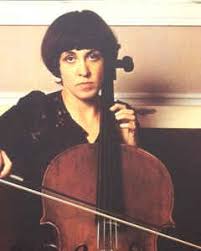 as illustrious as Barenboim’s, but not for lack of musicianship or skill: cellists are rarely glorified the way pianists and conductors are. In one aspect, though, they are alike: Barenboim formed a close circle of musical friends, and so did Gutman, with none other than Sviatoslav Richter and the violinist Oleg Kagan. This close relationship was rather unusual, as Richter was much older and much more famous than either Gutman and or Kagan. Like Barenboim, Gutman made music with her friends: three of them recorded trios by Schumann, Franck, Debussy, Ravel and Tchaikovsky. Gutman and Richter recorded cello sonatas by Frédéric Chopin, Camille Saint-Saëns, Prokofiev, Britten and more. And, like Barenboim, who married Jacqueline Du Pré, Gutmann eventually married Oleg Kagan. Natasha Gutman was born one day earlier than Barenboim, on November 14th of 1942 in Kazan, Russia. At the Moscow Conservatory she studied with the famous cellist and teacher Galina Kozolupova; later she took classes with Mstislav Rostropovich. As a student Gutman successfully participated in several international competitions, after which her international career took off. She played and recorded with major orchestras and conductors and participated in the Salzburg, Lucerne and other festivals. Together with Claudio Abbado she organized the “Berlin Encounters” festival and later, after the death of her husband Oleg Kagan, a festival in Kreuth, Bavaria, dedicated to his memory. Gutman inspired many noted composers: Alfred Schnittke, Edison Denisov and Sofia Gubaidulina wrote cello compositions for her. These days Gutman teaches at the Moscow Conservatory and musical school in Fiesole, Italy. Here’s Gutman and Richter playing Prokofiev’s Cello Sonata op. 119 in a live recording from 1992.Permalink
as illustrious as Barenboim’s, but not for lack of musicianship or skill: cellists are rarely glorified the way pianists and conductors are. In one aspect, though, they are alike: Barenboim formed a close circle of musical friends, and so did Gutman, with none other than Sviatoslav Richter and the violinist Oleg Kagan. This close relationship was rather unusual, as Richter was much older and much more famous than either Gutman and or Kagan. Like Barenboim, Gutman made music with her friends: three of them recorded trios by Schumann, Franck, Debussy, Ravel and Tchaikovsky. Gutman and Richter recorded cello sonatas by Frédéric Chopin, Camille Saint-Saëns, Prokofiev, Britten and more. And, like Barenboim, who married Jacqueline Du Pré, Gutmann eventually married Oleg Kagan. Natasha Gutman was born one day earlier than Barenboim, on November 14th of 1942 in Kazan, Russia. At the Moscow Conservatory she studied with the famous cellist and teacher Galina Kozolupova; later she took classes with Mstislav Rostropovich. As a student Gutman successfully participated in several international competitions, after which her international career took off. She played and recorded with major orchestras and conductors and participated in the Salzburg, Lucerne and other festivals. Together with Claudio Abbado she organized the “Berlin Encounters” festival and later, after the death of her husband Oleg Kagan, a festival in Kreuth, Bavaria, dedicated to his memory. Gutman inspired many noted composers: Alfred Schnittke, Edison Denisov and Sofia Gubaidulina wrote cello compositions for her. These days Gutman teaches at the Moscow Conservatory and musical school in Fiesole, Italy. Here’s Gutman and Richter playing Prokofiev’s Cello Sonata op. 119 in a live recording from 1992.Permalink